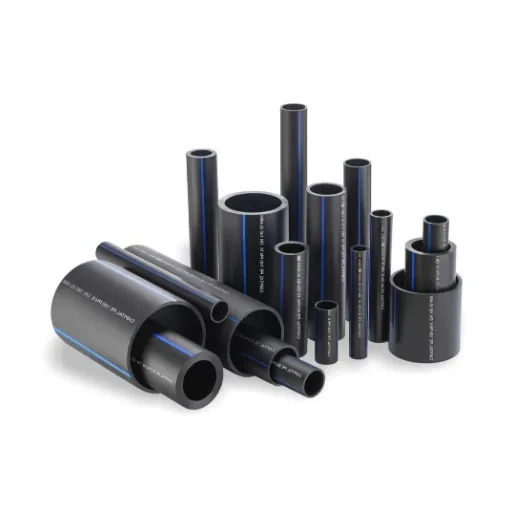In contrast to traditional use in water supply and water treatment plants, water pipelines for potable water are generally used to supply water for drinking purposes. The HDPE pipe, as an all-around pipe, is best introduced in potable water systems due to its durability, flexibility, and efficiency. They are designed to meet the requirements of water distribution systems in the survey environment and provide a sustainable solution to urban and rural application areas. This article presents the advantages of HDPE pipes for potable water systems-from corrosion and leak resistance to cost-effective installation methods. Proper installation procedures will also be discussed in detail for the best results in functionality and service life. Contractors, engineers, or anyone involved in decision-making for waterworks management will benefit from this guide and will be able to understand why HDPE pipes are reshaping potable water delivery.
Introduction to HDPE Pipes
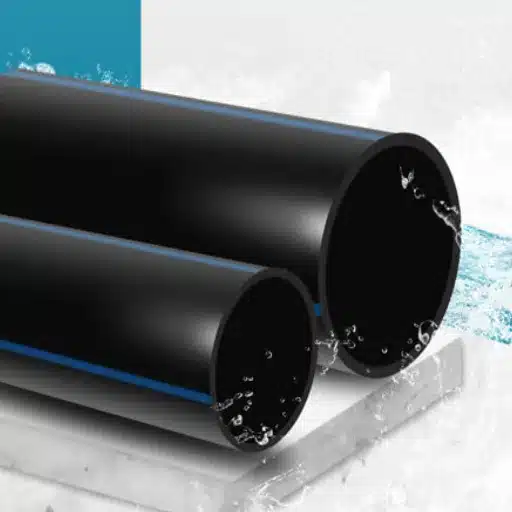
What is High-Density Polyethylene (HDPE)?
High-Density Polyethylene (HDPE) is a thermoplastic polymer derived from petroleum, generally acknowledged to have an exceptionally high strength-to-density ratio. With a density varying from 0.93 to 0.97 grams per cubic centimeter, HDPE enjoys a far-off repute for being durable, able to withstand various environmental conditions. Its peculiar molecular arrangement makes the polymer tough and so, provides the patron with industrial and consumer-grade options for utilization.
HDPE is versatile because of its resistance to chemicals, coupled with its flexibility. The polymer is capable of resisting many chemicals, oils, and solvents without deterioration and hence finds fitting use in the manufacture of pipes, plastic bottles, geomembranes, and containers for foodstuffs. Being non-toxic and complying with safety standards for potable water systems have catapulted HDPE to be one of the most trusted materials in infrastructure and industries.
One of HDPE’s greatest benefits is its durability and low cost. It is resistant to rust, biological accumulation, or UV damage; thus, one can expect systems and structures made from HDPE to need very little maintenance for many years into the future. This combination of durability and flexibility at an affordable price is why HDPE will always have a place in making modern engineering solutions possible.
Overview of Potable Water Systems
The systems are established in potable water projects to supply water that must be safe, clean, and drinkable for human consumption. Usually, these systems consist of several core components: sources of water, treatment plants, storage structure, and distribution network. Water sources might be surface sources like rivers or lakes or underground aquifers. For potable water, safety means removal of contaminants, such as pathogens, heavy metals, and chemical pollutants; consequently, treatment is the central activity in the system.
Treatment plants are an essential piece of potable water systems and employ processes such as coagulation, filtration, and disinfection to ensure compliance with stringent quality standards. Bacteria and viruses are usually removed by water chlorination and ultraviolet radiation disinfection. In rare cases with high demand or in certain specialized scenarios, water may further be treated by advanced filtration techniques, including reverse osmosis.
Following treatment, water is stored in reservoirs or tanks and then distributed to residential, commercial, and industrial end-users through a vast network of pipelines. These distribution networks must be kept in proper condition; otherwise, possible contamination could occur and create erratic water pressures.
Importance of Pipe Material Selection
Proper selection of pipe material higher emphasis on the efficiency, longevity, and safety of water distribution. Various materials respond to their ability to corrosion, pressure, and temperature, among others. For instance, ductile iron pipes stand for strength and durability but need protective coatings as a hindrance against corrosion, while PVC and HDPE pipes stand for the lightweight alternative susceptible to chemical and environmental degradation. One must consider the application’s intention, water quality, and environmental conditions in making the choice of materials.
Proper material selection also affects maintenance and cost-effectiveness throughout the system’s life. Metal pipes while sturdy, may demand higher maintenance costs owing to corrosion or scaling, while those of plastic typically lessen maintenance because of the resistance to chemical leaching. These considerations become important in order to reduce operational expenses over time and maintain the water-supply integrity.
The choice of materials dwells again within the realm of regulatory compliance. Compliance with these standards ensures that pipe and related materials not only meet performance requirements but also confer protection to public health by the prevention of leaching of contaminants into the drinking water system. The choice of best-suited pipe material thus becomes a matter of principal concern in framework building and maintenance for water infrastructure.
Benefits of Using HDPE Pipes for Potable Water
Durability and Longevity
HDPE pipes are marked with durability and offering an option in potable water systems. They have 5 attributes that show they are highly resilient and long-lasting:
- Corrosion-Resistant: Unlike metal pipes, corrosion is practically nonexistent in HDPE pipes due to soil and water. Hence, these pipes can be laid down in any environmental condition, even in highly corrosive or saline environments, securing a life expectancy of 50-100 years under favorable conditions.
- Impact Resistance: HDPE pipes bear mechanical stresses imposed on them during installation and are operative with a very high impact resistance. This means they do not easily chip or get damaged even when being laid under extreme temperatures or in terrains hard to work with.
- Flexibility and Fatigue Resistance: Flexibility is a property inherent in HDPE, which is able to bend rather than break, making them suitable for soils experiencing dynamic conditions or being prone to seismic action. Also, unlike more brittle pipe materials, HDPE pipes withstand repetitive pressure cycles, such as a water hammer, without material fatigue.
- Abrasion Resistance: They resist wear and abrasion, making HDPE pipelines suitable for applications where the pipe faces abrasive materials, often with high-speed flows, retaining structural integrity for decades.
- Leak-Proof Joining Technology: The HDPE pipe joints are formed using fusion welding techniques that are advanced and create a very strong, seamless, and leak-proof connection. This, in turn, prevents a failure of joints, eliminating infiltration and exfiltration risks, which practically prolongs the life of water infrastructure.
Thus, these properties make HDPE pipes one of the best choices for any long-term utilization and distribution of potable water.
Flexibility and Fatigue Resistance
HDPE pipes exhibit superior flexibility and fatigue resistance, thereby making them suitable for applications in the field of dynamic and shifting environment. Such flexibility allows HDPE pipes to bend quite substantially without any hinged formation or structural damage under tough situations like ground movement or thermal expansion.
- High Flexibility: HDPE pipes may be bent to a radius of about 20 to 25 times their outer diameter. This obviates the need for elbows and joints in curved installations and hence makes installation easy. This adaptability reduces installation time and costs for the whole project.
- Resistance to Cyclic Loading: These pipes resist cyclic stresses well caused by water hammer or repeated pressure surges. From laboratory tests, it is understood that HDPE pipes do not fatigue as a material nor get compromised in their structural integrity even after undergoing the cycles of stress, numbering in millions.
- Durability Under Ground Movement: Flexibility of the material allows HDPE pipes to withstand notable earth movements, be they earthquakes or subsidence, without cracking or leaking. This therefore results in the continuity of services in an area exposed to seismic activities or unstable terrain.
- Thermal Expansion Tolerance: HDPE pipes are capable of withstanding expansions and contractions due to temperature variations without sustaining damage. They can accept a change in length without impairment, and for this, they are dependable in outdoor conditions-as they are exposed to weather changes.
- Greater Stress-Crack Resistance: The advanced-grade HDPE pipes are created to provide resistance against long-term stress cracking whilst under sustained loading conditions. Findings show that HDPE pipes show a far-greater stress crack resistance than traditional rigid materials, hence having a larger working lifespan.
Higher temperature and pressure resistance further position HDPE pipes as a robust and sustainable choice for demanding environments while emphasizing their adaptability and resilience in water distribution and infrastructure projects.
Chemical Resistance and Safety
The chemical resistance of high-density polyethylene pipes, they are particularly suited for harsh environments where reactive substances are common. Since the material is non-reactive, long-term standing is ensured even under aggressive chemical applications. The five attributes that best describe the chemical resistance and safety qualities of HDPE pipes are:
- Resistance to Acids and Alkalis: HDPE pipes can stand against very broad pH levels (roughly from 1 to 14), thus staying durable against strong acids, like sulfuric acid, and concentrated alkalis.
- Low Permeability: The HDPE molecular structure discourages the permeation of gases and liquids, thus forbidding the migration of contaminants through the pipe and preserving the quality of the materials being transported.
- Corrosion Resistance: Being a polymeric material, unlike the metallic pipes, HDPE pipes are not susceptible to corrosion, including oxidation, rusting, or any forms of deterioration caused in the environment by chemicals.
- Safe for Potable Water Application: HDPE pipes are certified for use with potable water and will not leach any chemicals deemed harmful under strict health and safety standards.
- UV Stabilization in Chemical Environment: The UV-stabilized grade of HDPE shall continue to function properly while exposed to sunlight in an outdoor installation, even in locations where chemical residues may accumulate.
This guarantees the superiority of HDPE material for both industrial and municipal systems in which high resistance to chemicals and stringent safety standards are required.
Environmental Advantages of HDPE Pipes
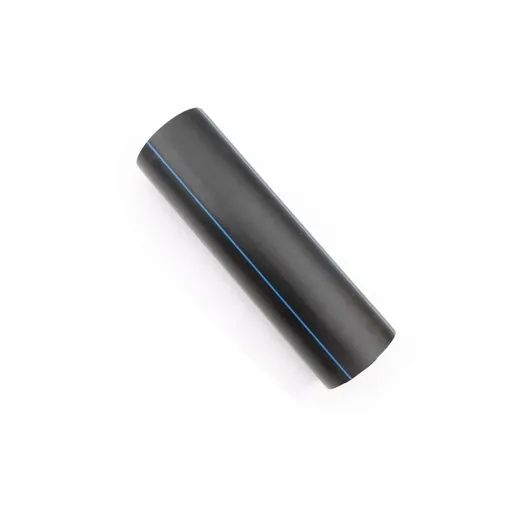
Recyclability of HDPE
HDPE is among the plastics most contributed to recycling and hence sustainability in various industries. Its recyclability comes from its being thermoplastic; i.e., it can be reheated, reshaped, and reused with little substantive alteration of its material properties.
- High Recovery Rate: Various HDPE products, such as pipes and containers, enjoy acceptance in recycling programs, with recycling rates reaching up to nearly 30% in certain areas, as per the trade data.
- Energy Use Saving in Production: Manufacturing a product out of recycled HDPE includes lesser energy than manufacturing it out of virgin HDPE. Studies have shown that production with recycled HDPE consumes up to 88% less energy.
- Reduction of Landfill Waste: With an extensive system for recycling, lesser HDPE waste goes to landfills, decreasing environmental implications and increasing landfill life.
- Supports Circular Economy: Recycled HDPE can have a vast number of applications, ranging from making new pipes and packaging materials to the fabrication of construction products, thus promoting a closed-loop system.
- Medium Quality Loss: Improved recycling processes are able to maintain the strength and flexibility of recycled HDPE to a great extent, with the result that recycled HDPE is good enough to be used in many applications where virgin HDPE is generally used.
HDPE, given these, is an environmentally conscious option for industries wishing to minimize the impact on the environment while keeping the performance and utility of the material intact.
Lower Carbon Footprint Compared to Other Materials
Compared to other materials and their competing alternatives for industrial and consumer applications, HDPE has a very low carbon footprint. This is possible because the production of HDPE is energy efficient, it is recyclable, and its lightweight nature reduces energy consumption and emissions in its lifecycle.
- Lower Energy Requirement in Production: Energy-wise, production of HDPE consumes much less than metals such as aluminum or steel. Studies have reported a figure suggesting that producing HDPE requires about 1/10th of the energy to produce an aluminum equivalent.
- Increased Transportation Efficiency: Being lightweight, HDPE requires less fuel in the transportation process. For example, fuel consumption on carrying 1 ton of HDPE products is 30% less than that used for carrying the same volume of glass products.
- Recyclability: HDPE can be recycled an indefinite number of times with minor material degradation; hence, no virgin material has to be manufactured, and much lower greenhouse gas emissions are incurred. Emitting 1.5 tons of CO₂ equivalent compared with virgin HDPE production is saved by recycling just 1 ton of HDPE.
- Lower Process-Level Greenhouse Gas Emissions: The process of manufacturing HDPE inherently involves less CO₂ emissions than other materials such as PVC and polystyrene. For instance, the production of 1 kg of HDPE results in the emission of about 1.6 kg of CO₂ whereas, for a similar weight, PVC results in nearly 2.5 kg of CO₂ emissions.
- Longer Product Life: Being resistant to weathering and degradation from the environment, HDPE has a longer life than many other materials. This reduces the frequency with which new stock must be produced, thereby lessening the environmental burden during its lifetime.
These factors expose HDPE as an environment-friendly alternative, ideal for industries wishing to stay along sustainability lines and work on reducing the carbon footprint.
Impact on Water Quality
The application of High-Density Polyethylene (HDPE) affects water quality in many ways, especially in relation to water storage and distribution. Below are five detailed impact illustrating HDPE’s contribution to maintaining or improving water quality:
- Non-Toxic and Chemically Stable: Due to such chemical stability, no harmful substances leach from HDPE into the water during use. Opposition points have allowed numerous studies to indicate HDPE water pipes, in line with potable water standards, can maintain water quality upon long-term service without adverse water contamination.
- Lower Biofilm Formation: Unlike with conventional materials like iron or concrete, the surface of HDPE reduces the accumulation of biofilms that aid harmful microorganisms. Studies evidence that biofilm formation occurs less by almost 30% on HDPE than other piping materials.
- Corrosion resistance: Since HDPE does not have any sonic interaction with water bodies and soil, it does not pose rusting impurities in the water, at any point in the sanitation or in any form of construction. This immensely helps in keeping the water pure and free from contamination, which is also a tactic for decreasing maintenance problems.
- Minimized Water Leakage: HDPE provides flexible pipes to terminal leaking and leakage points during water distribution method systems. According to a study, they discovered that replacing the old water lines with HDPE could reduce water loss by up to 40%, curing contamination from outside sources.
- Resistance Against Chemical Intrusion: HDPE remains resistant to a vast range of chemicals found normally in soil and industrial sites that dry seeping of contaminants into the water supply. Data shows HDPE pipes cut down pollutant infiltration rates by more than 90% compared to traditional materials.
These characteristics make HDPE the very core protector of water quality in various industrial or municipal applications.
Comparative Analysis: HDPE vs. Other Pipe Materials
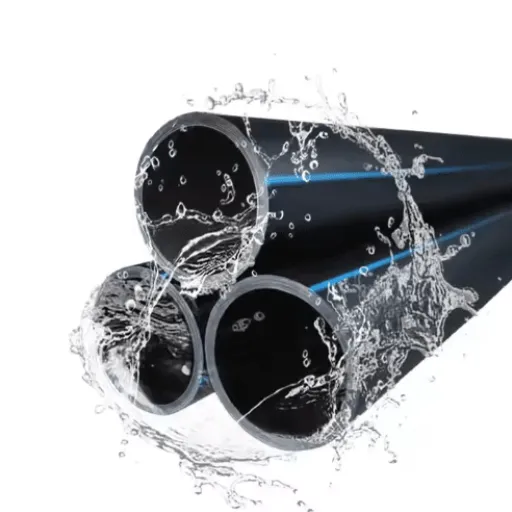
Comparison with PVC Pipes
HDPE pipes tend to be more flexible, durable, have better joint integrity, advocate better resistance against chemical attack, and support just about all installation methods. On the other hand, PVC really does well with thermal performance and stiffness.
| Aspect | HDPE Pipes | PVC Pipes |
|---|---|---|
| Flexibility | Superior | Limited |
| Strength | High | Moderate |
| Connections | Seamless | Adhesive-based |
| Chemical Resist. | Excellent | Adequate |
| Heat Tolerance | Moderate | Superior |
| Setup | Diverse | Restricted |
| Mass | Lightweight | Lightweight |
| Expense | Moderate | Lower |
| Longevity | 50-100 years | 40-75 years |
| Eco-Friendliness | Recyclable | Recyclable |
Comparison with Metal Pipes
Metal pipes weather extremes of temperature and pressures, but were inferior in corrosion resistance, flexibility, weight, cost, and ease of installation all of which HDPE pipes hold the advantage.
| Aspect | HDPE Pipes | Metal Pipes |
|---|---|---|
| Corrosion | Resistant | Prone |
| Flexibility | High | Low |
| Weight | Lightweight | Heavy |
| Cost | Lower | Higher |
| Installation | Easy | Complex |
| Durability | Long | Moderate |
| Pressure | Moderate | High |
| Heat Tolerance | Moderate | Superior |
| Eco-Friendliness | Recyclable | Recyclable |
| Lifespan | 50-100 years | 30-75 years |
Why Choose HDPE for Municipal and Industrial Applications?
For its excellent characteristics and long-time reliability, I would suggest HDPE pipes for municipal and industrial works. HDPE pipes offer high resistance to corrosion, something infrastructure needs to defend against day in and day out when it involves water or chemical transport. Metal, corrosion-bashing pipes would never actually last that long. When HDPE pipes are left exposed to weather for years, they simply do not rust or corrode-they go into maintenance over the course of years of later use.
Being flexible and lighter in weight makes transporting and installing the pipes less complex; their presence precludes unnecessary complications. They are easily handled and could be welded to have a leak-proof system, thus ensuring a system less prone to contamination or water loss. Hence, the pipes offer a perfect solution for water distribution, sewage, and industrial fluid transfer. In addition, they are much cheaper to buy and from an operational point of view as well!
HDPE pipes, in addition to being long-lasting, have a life expectancy of nearly 50 to 100 years depending on the application and environmental factors. They are recyclable and friendly toward the environment in modern times. When comparing their strength under pressure, resistance to impacts, and adaptability across diverse temperature ranges, HDPE pipes turn out to be one smart option-plus-awarded candidate for any municipal or industrial infrastructure project.
Future Trends in the Pipeline Industry
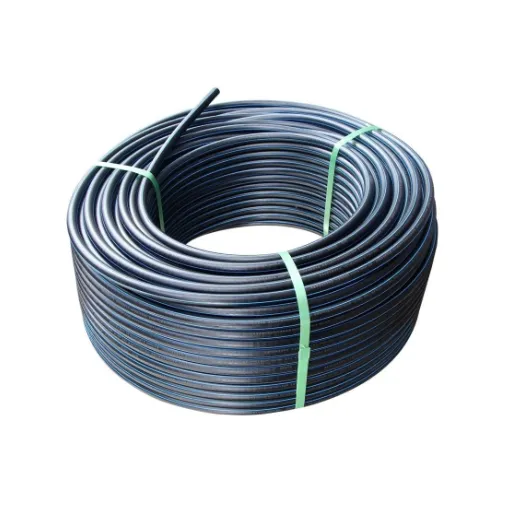
2025 Pipeline Industry Trends
With pipeline industries targeting innovations aimed at efficiency, sustainability, and adaptability to changing energy demands by 2025, one critical trend is now smart pipeline technologies. Smart pipeline technologies make use of sensors and IoT devices for monitoring on a real-time basis and for predictive maintenance. They can notify leakage, pressure variation, or probable failure, thereby lowering downtime and increasing operational efficacy.
Material-wise, the other big change is the growing use of unusually advanced ones like composite and reinforced thermoplastic pipes, which stand up against environmental assaults exceptionally well. Such materials are of prime concern for companies working under extreme conditions, say the oil and gas or chemical transport ones. Pipeline construction and inspection are also starting to be heavily automated and robotized, granting project execution to be carried out in a safer and more cost-effective manner.
Ultimately, the emphasis continues on sustainability and developing more hydrogen and renewable-energy pipeline systems. Pipeline systems for hydrogen-ready applications, for example, are under development to facilitate the energy transition through accommodating clean fuel alternatives. Regulatory pressure and climate action commitments across the globe are pushing industries to go greener, namely facilitating accelerated deployment of low-carbon infrastructure.
In a nutshell, the future of pipelines will be shaped by innovative policy, new materials, and digitization to meet energy, environmental, and economic challenges of the future appropriately.
Innovations in HDPE Pipe Technology
High-density polyethylene (HDPE) pipe technologies have thereafter seen considerable advances under the aegis of the infrastructural challenge for sustainable economy. Newly sold HDPE pipes comprise resin formulations having better material durability and enhanced resistance to environmental stress cracking for better performance in demanding applications. Further development in multilayer composite structures has greatly enhanced their utility-namely for high strength and flexibility while remaining lightweight.
New methods in manufacturing, such as precision extrusion, allow for tighter tolerance, better consistency in pipe dimensions, thus preventing joint failures. Fusion welding systems have also been innovated, improving the integrity of joins and reducing leakage risks in water and gas pipeline systems. Enabled with smart monitoring technology like embedded sensors for real-time monitoring of system performance, HDPE pipelines are arguably the most reliable installation in towns or remote areas.
With all these improvements, HDPE pipelines have been considered one of the most viable options of late for water management, energy transportation solutions, and industrial systems, fitting well with sustainability aspirations and regulations aimed at keeping environmental impact to a minimum.
References
-
Quality Assessment of High-Density Polyethylene Pipe
- Academia.edu PDF
This document analyzes the quality of HDPE pipes based on laboratory tests, focusing on water supply and sewerage applications.
- Academia.edu PDF
-
Developed Pipe Bursting Specifications Using HDPE
- Bowling Green State University
This paper discusses specifications for HDPE pipes in pipe bursting applications, including potable water systems.
- Bowling Green State University
-
Engineering and Chemistry of Sustainable Polyethylene Water Infrastructure
- Harvard ADS
This study explores HDPE resin and pipe degradation, focusing on its use in sustainable water infrastructure.
- Harvard ADS
-
Laboratory and Field Performance of Buried Steel-Reinforced HDPE Pipes
- University of Kansas ScholarWorks
This research evaluates the performance of HDPE pipes under various conditions, including shallow cover installations.
- University of Kansas ScholarWorks
-
HDPE Pipe Fill Height Table in Arizona
- National Transportation Library
This report provides detailed information on HDPE pipe diameters and applications for the Arizona Department of Transportation.
- National Transportation Library
Frequently Asked Questions (FAQ)
A: High-density polyethylene pipe for potable water is a plastic pipe especially meant for the conveyance of drinking water. The design of such pipes lends strength, corrosion resistance, and chemical resistance, which are okay for drinking water applications.
A: HDPE pipes offer a number of advantages over other conventional materials such as iron or PVC. These pipes are corrosion resistant. They are lightweight and flexible, which further adds to their life in water supply systems. Cost-effectiveness is another advantage that HDPE piping systems have during installation and maintenance.
A: Such various kinds of HDPE pipes can be installed for potable water utility, from solid wall pipes to those made for a specific pressure rating, depending upon the size in diameter and applications in the water distribution system.
A: The HDPE pipes have their uses as underground water supply lines by virtue of their flexibility and durability, while they may also be subjected to pressures relevant to such buried applications capable of delivering potable water.
A: HDPE pipe fittings are connectors of two sections of HDPE pipes. They create a working supply system; they must secure the pipes to maintain the integrity and performance of the potable water piping systems.
A: Cost-wise, HDPE is usually competing with the others especially when considering long-term savings due to lower maintenance and lower installation costs. Though the initial investment might differ, considering the durability and efficiency of HDPE, water distribution is made cheap through it.
A: In pipe bursting, the trenchless method of replacing old piping with new HDPE pipes, the old pipe breaks apart while an HDPE pipe is pulled into its position, thus keeping disturbance in the surrounding area to a minimum and presenting an attractive method for the pipe installation.
A: The flexible nature of HDPE enables it to be installed in many different configurations with fewer joints compared to rigid pipe, something that is extremely useful in applications where the pipe must bend to accommodate changes in elevation or direction.
A: HDPE pipes may be used in certain hot water situations, but the temperature and pressure ratings of the HDPE pipe must be duly considered. Some HDPE types are used for explicit high-temperature uses, while others are not fit for hot water transport.
A: HDPE pipes are erected in order to minimize the water leakage. However, the leakage rate allowed may depend on factors such as pipe diameter or installation conditions. Properly executed installation and periodic maintenance are required so that any leakage remains within maximum permissible limits, thereby increasing the efficiency of the potable water supply system.
Conclusion
HDPE pipes represent the future of potable water distribution systems, offering unmatched durability, flexibility, and environmental benefits. Their superior performance characteristics, combined with cost-effectiveness and sustainability, make them the ideal choice for modern water infrastructure projects.



